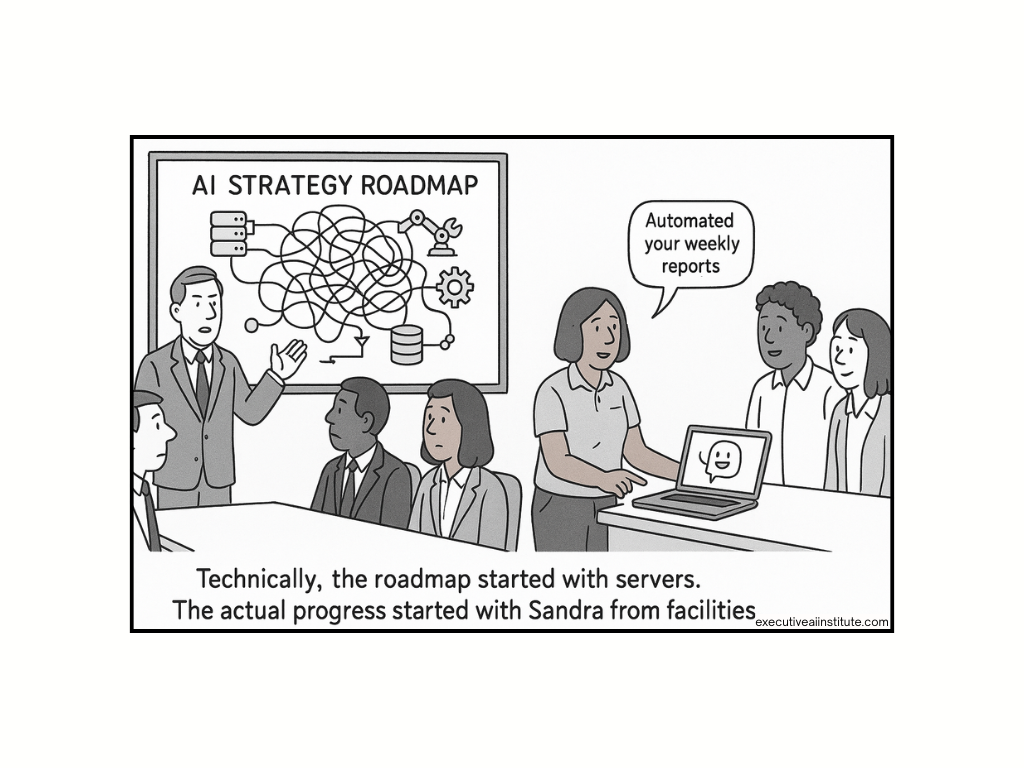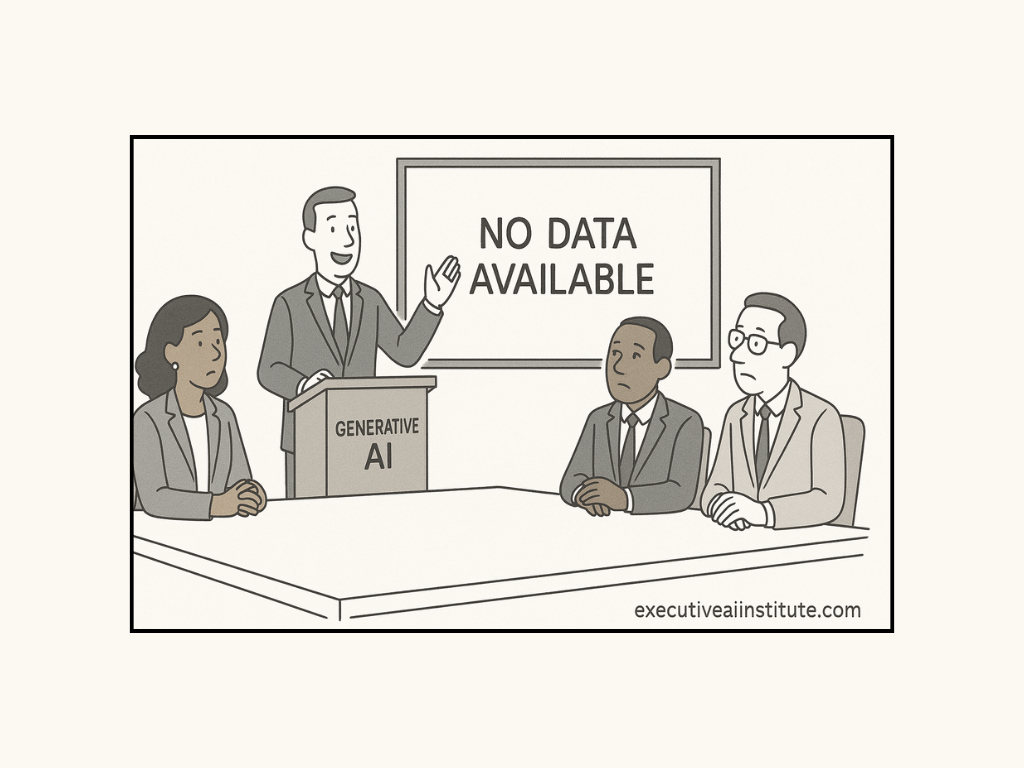Every leader wants to seize the promise of generative AI—but not every leader knows where to start. Or worse, they start with tech-first tactics and lose momentum fast.
The truth? Your generative AI journey won’t look like anyone else’s. But the smartest ones? They all begin with the same north star: people.
This isn’t just about deploying new tools. It’s about reimagining workflows, elevating capability, and setting the tone for a responsible, future-ready organisation. Here’s how forward-thinking leaders are making it happen.
1. START WITH PEOPLE, NOT PLATFORMS
Generative AI is a team sport. Your first play? Equip your people.
- Train for confidence, not just competence. Your teams need to understand what gen AI is, but also what it means for them.
- Create safe spaces to experiment. Encourage pilots, hackathons, and curiosity-led side projects.
- Document everything. The messy middle is gold—capture lessons learned to guide broader adoption.
- Democratise access. Make sure everyone, not just the techies, gets hands-on with the tools. Gen AI belongs in finance, HR, ops—everywhere.
Takeaway: Culture eats AI strategy for breakfast. Start with hearts and minds.
2. BUILD RESPONSIBILITY INTO THE BLUEPRINT
Trust is your AI advantage. Waiting to “figure out the ethics later” is a gamble you can’t afford.
- Refresh your responsible AI guidelines. If they exist, great—update them. If not, now’s the time.
- Embed ethical checks into dev and ops. This isn’t a checklist—it’s a mindset.
- Think inclusion and bias from day one. Not day 100. You won’t fix this retrospectively.
Takeaway: Responsible AI isn’t a department—it’s a shared leadership discipline.
3. TREAT DATA LIKE THE STRATEGIC ASSET IT IS
Here’s the hard truth: even the best model can’t out-think bad data.
- Inventory your most valuable data sources. Then prioritise what’s fit-for-AI today.
- Modernise your architecture. Yes, this is the less glamorous part. It’s also where most initiatives succeed or stall.
- Bridge silos. Generative AI thrives on context—make sure your systems can talk to each other.
Takeaway: No clean data, no clear insights. It’s that simple.
4. PILOT WITH PURPOSE
Random acts of AI? Tempting. Strategic pilots? Transformative.
- Start with real business problems. Work backwards to see where gen AI fits.
- Prioritise high-value, low-risk projects. Quick wins build credibility.
- Don’t stop at task automation. Redesign entire processes where AI gives you leverage.
Takeaway: Pilots are more than proof-of-concept—they’re your AI credibility test.
5. PLAY TO YOUR STRENGTHS—THEN EXPAND
You don’t need the fanciest model. You need the right mix of tools, data, and talent for your goals.
- Leverage what you already have. Then scan for where new capabilities could unlock more value.
- Mix and match tools. Sometimes it’s a combo of open-source, enterprise, and bespoke that gets it done.
- Build your roadmap iteratively. Gen AI isn’t a single bet—it’s a portfolio of possibilities.
Takeaway: Focus on strategic fit over shiny features.
CONCLUSION: A CALL TO BOLD, HUMAN-CENTRED LEADERSHIP
Generative AI isn’t a tech trend. It’s a leadership test.
How will you create the conditions for responsible innovation? How will you bring your people along, ethically and effectively? How will you steer the organisation through ambiguity while keeping strategy—and humanity—at the core?
At EAII, we help leaders like you answer these questions with clarity, courage, and capability. Whether through executive briefings, transformation masterclasses, or embedded coaching, we meet you where you are—and move you where you need to go.
Lead your organisation into the AI era. Thoughtfully. Responsibly. Together.
Curious where to begin? Let’s talk pilots, priorities, and momentum.



.png)
